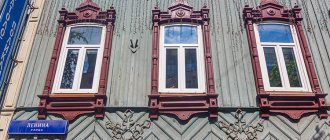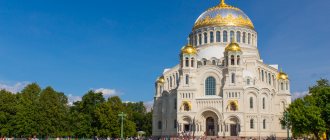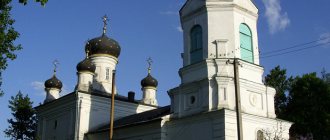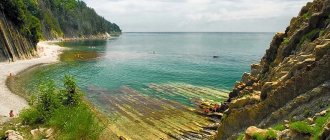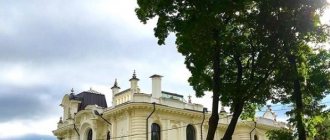The Yaroslavl region is famous throughout the world for its beautiful churches, architectural monuments, ancient history and natural sites. Of the 8 cities of the Golden Ring, 3 are located in the Yaroslavl region - Yaroslavl, Pereslavl-Zalessky and Rostov the Great.
The history of the Yaroslavl region is rich in significant events and historical monuments: it was in Uglich in 1591 that a tragedy occurred that radically changed the course of Russian history - the heir to the throne, the son of Ivan IV the Terrible, young Tsarevich Dmitry, died, as a result of which the Romanov dynasty came to power. In 1612, during the occupation of Moscow by the Poles and Lithuanians, Yaroslavl became the temporary military capital of Rus', here Minin gathered the first militia.
Rostov Kremlin
The Rostov Kremlin is a beautiful landmark of Rostov the Great in the Yaroslavl region. Initially, it was the residence of the Rostov Metropolitan on the shores of Lake Nero. Its walls were decorative in nature and were not intended for protection from enemies, although the architectural ensemble was later called the Kremlin. The Kremlin was built in 1670-1683. according to the project of P. Dosayev.
After the transfer of the metropolis to Yaroslavl, the Kremlin lost its significance and began to gradually deteriorate. In the 19th century The temples of the complex were restored with donations from merchants. The main building of the Kremlin is the stone Assumption Cathedral (1508-1512) 60 m high with a cross. The ensemble of the Rostov Kremlin also includes the belfry of the Assumption Cathedral (1682-1687), the Church of the Resurrection (17th century), a wall with 11 towers, and outbuildings. Currently, this place is a state architectural museum-reserve of the Yaroslavl region.
Museums of the Yaroslavl region
In the Museum “Music and Time” in Yaroslavl
There are more than 250 museums in the region, the exhibitions of which reflect the thousand-year history of the Yaroslavl lands. In the city of Pereslavl-Zalessky alone there are about 20 museum collections.
Among Yaroslavl museums, the “Music and Time” museum, created in the regional center in 1993, is noteworthy.
It became the first private museum in the post-Soviet space. In a small mansion on the Volzhskaya embankment, sonorous bells, ancient music boxes and organs, gramophones and gramophone records, a variety of musical instruments, icons and old clocks are exhibited.
Exhibition at the Finifti Museum in the Rostov Kremlin
Several museums are also open in the Rostov Kremlin. And the most visited of them is, perhaps, the museum of enamel. It contains a rich collection of beautiful enamel miniatures - real works of art. Museums of a mouse, a workhorse, steam locomotives, a coachman, gramophone records, radios, antique sewing machines - you name it in the Yaroslavl region!
Boris and Gleb Monastery
In the village of Borisoglebsky, Yaroslavl region, there is a stunning stone architectural ensemble of the Orthodox male Borisoglebsky monastery. The unique beautiful complex on the banks of the Ustya has survived to this day almost in its original form. According to historical data, this place was founded by the hermits Fyodor and Paul in 1363 with the blessing and assistance of Sergius of Radonezh. The monastery was dedicated to Boris and Gleb, the first Russian saints - the deceased sons of Prince Vladimir.
In a short time, a temple, cells, and a powerful stone defensive wall were built in the monastery, which served as protection for the monastery for several centuries. The first stone church on its territory was erected in 1522 on the site of the old Boris and Gleb wooden church, then the Annunciation Church in 1524-1526. Boris and Gleb Church was rebuilt several times - in 1780 and 1810.
Since 1923, the Rostov State Museum has been located on the territory of the still functioning monastery; many valuable icons, bells, and frescoes have been destroyed. In 1924, the monastery was closed completely, and government agencies were located in its buildings. Only in 1961 The museum completely displaced all organizations from the territory of the monastery, and a complete restoration of this stunningly beautiful place was carried out.
Church of Tsarevich Dimitri on Blood
On the territory of the Uglich Kremlin there is a beautiful Church of Tsarevich Dimitri on the Blood. A small wooden chapel was erected in the courtyard of the princely palace in 1591, where the 13-year-old heir to the throne was killed. In 1610-1611 The Poles ravaged the city and burned the building. In 1630, a tented wooden temple with a church was built on this site. In 1692, the wooden temple was rebuilt in stone and in this form has reached our time.
Today there is a museum here, the memorial exhibition of which is dedicated to the death and canonization of the last prince from the Rurik family. One of the central exhibits of the exhibition is a bell that announced the sad news of the death of Dmitry, who was sentenced for this to lashing, deprivation of his tongue and ear, and exile to Tobolsk until 1892.
Rybinsk Bridge
One of the most beautiful places in the Yaroslavl region is the Rybinsky Bridge on the Volga, the construction of which began in 1939 according to the design of the architect Ulanov. In 1941, work was temporarily suspended and resumed only in 1955. By August 1963, construction was completed.
The Rybinsky Bridge has become one of the largest on the Volga, the length of its roadway with all additional structures (overpass and bridge over the Cheremukha River) is 1885 m, the height to the deck is 22 m, the height of the small arch is 80 m, and the large arch is 128 m.
Lake Pleshcheyevo National Park
One of the most beautiful and picturesque places in the Yaroslavl region is Lake Pleshcheyevo National Park, founded in 1988. On its territory there are 22 historical, 94 architectural and 1 natural monuments. The central element of the park is the glacial-karst Lake Pleshcheyevo, one of the largest freshwater lakes in Russia.
Lake Pleshcheyevo is considered a unique place in the Yaroslavl region and Russia in terms of the quality and purity of water; it is home to 16 species of fish, including the rare European vendace, immortalized on the coat of arms of Pereslavl-Zalessky, founded in this beautiful lake region in 1152.
Among the historical and architectural attractions in the park are: Kleshchinskoye fortification, the predecessor of Pereslavl; a unique boulder of glacial origin Blue-stone of blue-gray color with miraculous properties; Fedorovskaya Chapel, built in the birthplace of Fedor, the son of Ivan the Terrible and killed by him; Boat of Peter I - a museum estate with an amusing flotilla of the emperor on Lake Pleshcheyevo; amazingly beautiful arboretum named after. Kharitonov, founded in 1952 and opened in 1960; iron museum, teapot museum; landscape natural monument Kukhmar tract, etc.
The most beautiful places in Yaroslavl
Review of the city's brightest sights.
Yaroslavl is an ancient city with an interesting and rich history, imprinted on the streets and various architectural landmarks. A curious eye will see many ancient monuments scattered throughout the center. This review will tell you about the most beautiful places in Yaroslavl.
Arrow
The Yaroslavl "Strelka", the confluence of two rivers, was restored in 2010, for the thousand-year anniversary of the city. Colorful musical fountains, lawns, a landscape park, the banks of the Volga - a wonderful place for a walk and relaxation. There is a view of Kotorosl and the Volga, and if you turn around, you will see the recently erected Assumption Cathedral. The Metropolitan Chambers, the Arsenal Tower are the starting point of the ensemble of churches throughout the center of Yaroslavl. Yaroslav the Wise began construction of the city at Strelka. The ancient image of the place was even recreated in the historical feature film “Yaroslav. A thousand years ago."
Volzhskaya embankment
Volzhskaya embankment is a favorite vacation spot for city residents. A flat path along the right bank of the Volga descends from Lenin Avenue to Strelka. For the thousand-year anniversary of the city, the embankment was reconstructed, a third level was added to it, very close to the waves of the river. Moving along the river, you can see the monument to Nekrasov, and a little further away the Nekrasov gazebo is a popular place for photography. Across the road you will find the “Music and Time” museum, and closer to the “Strelka” you will meet the art museum, the Arsenal, the metropolitan chambers on the territory of Rubleny Gorod, and a smooth turn of the path will lead you to the confluence of two rivers - the Volga and Kotorosl, above which rises the majestic Assumption Cathedral.
Tolga Monastery
The Tolgsky convent is considered one of the most beautiful places in Yaroslavl. The history of the monastery is very interesting in many respects, for example, a walk through this place will be very exciting for those who are interested in the history of the Orthodox religion, the history of Russian architecture, and for those who are passionate about the art of icon painting. The monastery is located eight kilometers from the city border, standing on the left bank of the Volga River. For centuries, an atmosphere has been created here, which is alien to worldly problems and everyday worries. Many Yaroslavl artists, musicians and actors come to Tolga for inspiration. The monastery is active, but the doors are open to anyone who wants to come inside.
Tveritskaya embankment
Tveritskaya embankment is located in the Zavolzhsky district of the city. Adjacent directly to the largest and cleanest sandy beach in Yaroslavl. During the swimming season this is a very busy place. In winter, spring and autumn it is a place for romantic walks. The so-called Tveritskaya Sloboda is located on the low bank of the Volga. The appearance of pre-revolutionary Yaroslavl can be seen in the silhouettes of the streets located directly next to the Tveritskaya embankment. And if you walk to the very end, you will find yourself on the site of the most ancient human settlement of the Neolithic era.
Tugova Gora
The name of this place comes from the word “to push” or “tuga”. A long time ago, here, in a desperate battle with the Mongols, many Yaroslavl residents were killed. In memory of the terrible event, a church was built on the mountain, and many famous Yaroslavl residents were buried in the quiet Tugovogorsk cemetery. Here in July, Tugovaya Mountain Day is celebrated annually. It's a very peaceful place. From Tugovaya Mountain there is an unusual view of the central part of the city.
The chopped city, or the Yaroslavl Kremlin
The chopped city in Yaroslavl is the name of the place where, as legend tells, the city was founded. Today there are no reminders of this. The appearance of this place has changed many times. With each new era came new changes. But one thing has remained the same since time immemorial: the magnificent panorama of the Volga River. Many periods of Yaroslavl's history are reflected in monuments and buildings. This is where the Yaroslavl Eternal Flame is located. The beautiful architecture of ancient buildings, an abundance of greenery and an embankment with benches make this place very romantic, sincere and memorable.
Zemlyanoy city
Almost 500 years ago there was a fire in the city and Yaroslavl burned out completely. Elena Glinskaya, the famous mother of Ivan IV, ordered the city to be rebuilt. An earthen rampart was built on the northwestern side, and part of the city inside it was named Zemlyanoy. You can get to the territory of the former Zemlyanoy Gorod directly from the Volzhskaya embankment - by going down into the Medveditsky ravine, crossing the stadium and going out onto the Kotoroslnaya embankment, which will lead you to the far border of Zemlyanoy Gorod - the Spassky Monastery. From all the buildings of the ancient place, only three towers remain today - Znamenskaya, Arsenalnaya and Uglichskaya.
Millennium Park
If you walk along Kotoroslaya embankment, you will not be able to pass by the Millennium Park. It is located near the river bank and was built in honor of the millennium of Yaroslavl. A long time ago, there was a hippodrome on this site, and now there are trees, in the planting of which cosmonaut Valentina Tereshkova participated. Zurab Tsereteli donated the controversial cast-iron bear to the park. If you have children with you, they will have a place to play in the spacious playgrounds with a safe surface.
Island-park "Damansky"
"Damansky" is the largest family amusement park in Yaroslavl. Located in the central region, in the waters of the Kotorosl River. This advantage has allowed Damansky to become a favorite place for recreation and entertainment for city residents of all ages. But everyone who comes to visit Yaroslavl is recommended to visit “Damansky”, because everyone loves to have fun, and most importantly, to relax culturally and have a good time in their free time! A large selection of attractions, summer cafes where ice cream is prepared for children and barbecue for adults, will make the Damansky Island Park an excellent option for your weekend getaway.
If you know other most beautiful places in Yaroslavl, please share in the comments.
Palace-estate of the manufacturer Ponizovkin Krasny Profintern
One of the most original and beautiful places in the Yaroslavl region is the estate palace of the Ponizovkins, the family of the mysterious and famous Russian manufacturer. According to some sources, the founder of the business, Nikita Ponizovkin, was a simple peasant who managed to redeem himself from captivity and create his own starch, syrup and chemical empire.
The castle itself was built according to the design of the architect Lermontov on the territory of one of the merchant's factories in the Yaroslavl region, by order of his grandson Nikita in 1912-1914. as a wedding gift to his fiancée Rosa Bursian.
The manor house was built in a beautiful location on the banks of the Volga in an eclectic style with elements of Art Nouveau - Gothic luxury, medieval towers with loopholes, balconies and galleries with pointed roofs. The interior decoration of the mansion, according to witnesses, made an even more stunning impression. Currently, the castle is almost destroyed, but according to some information it has been bought into private ownership and is being prepared for restoration.
